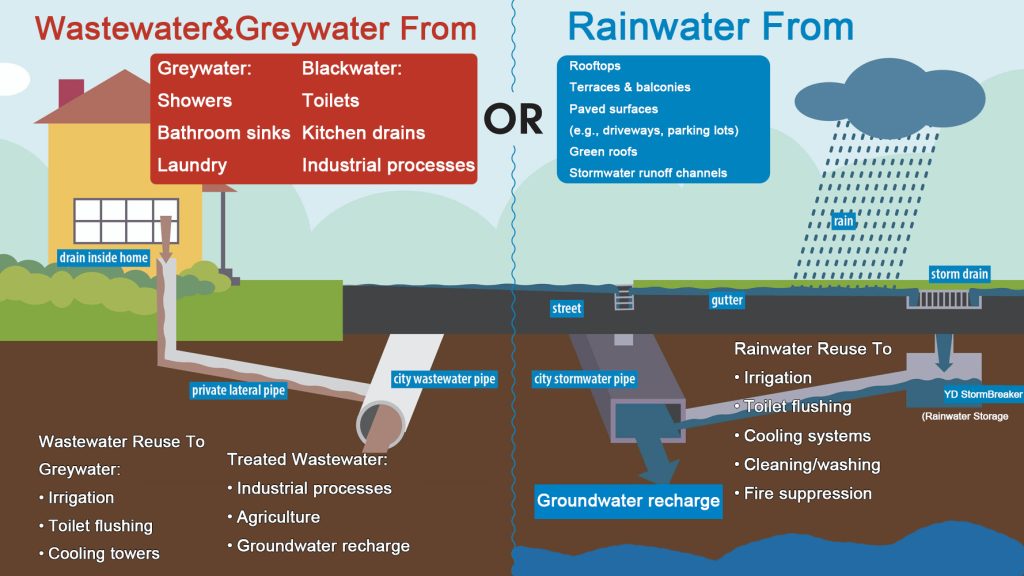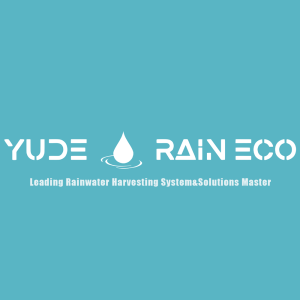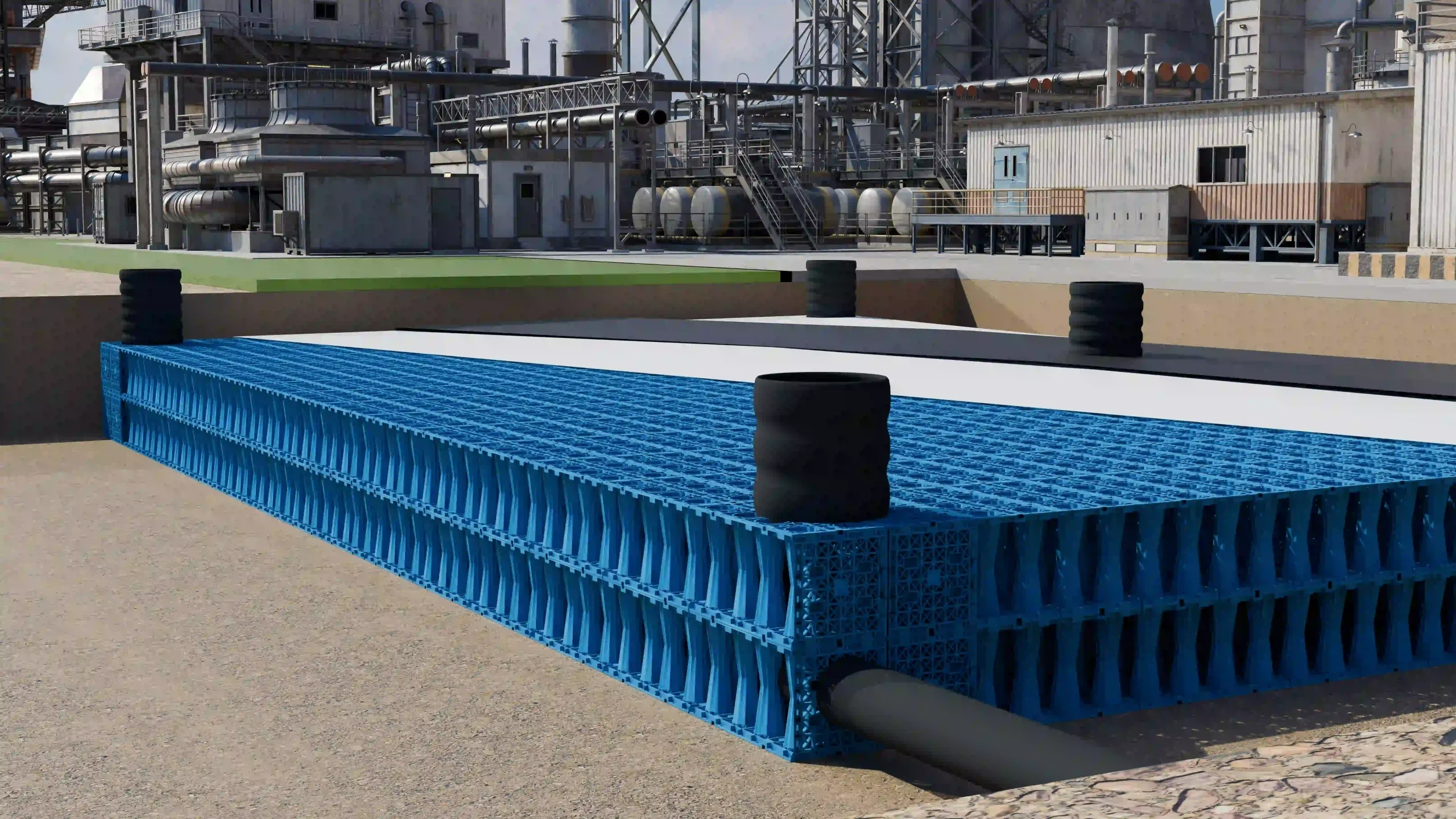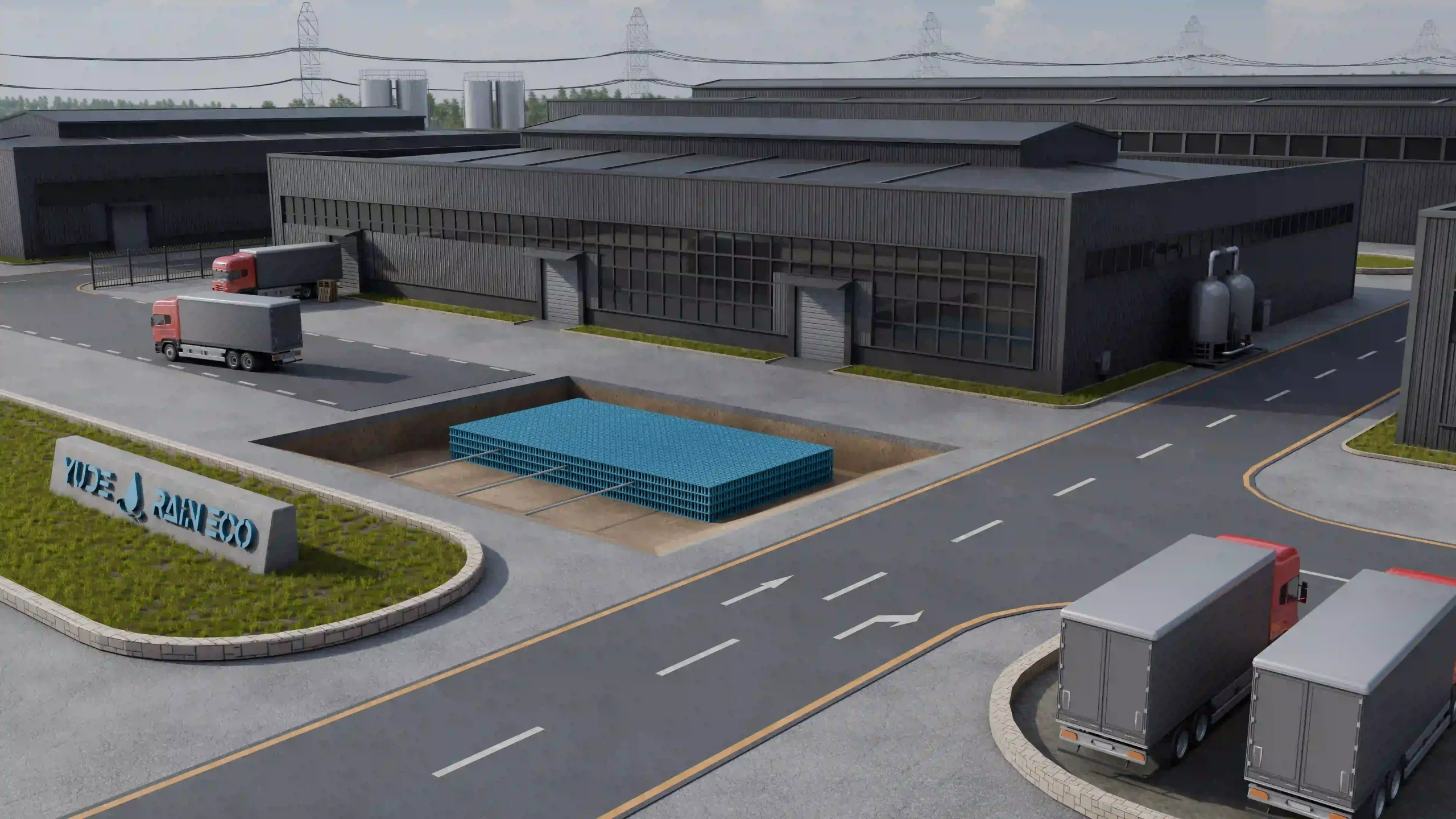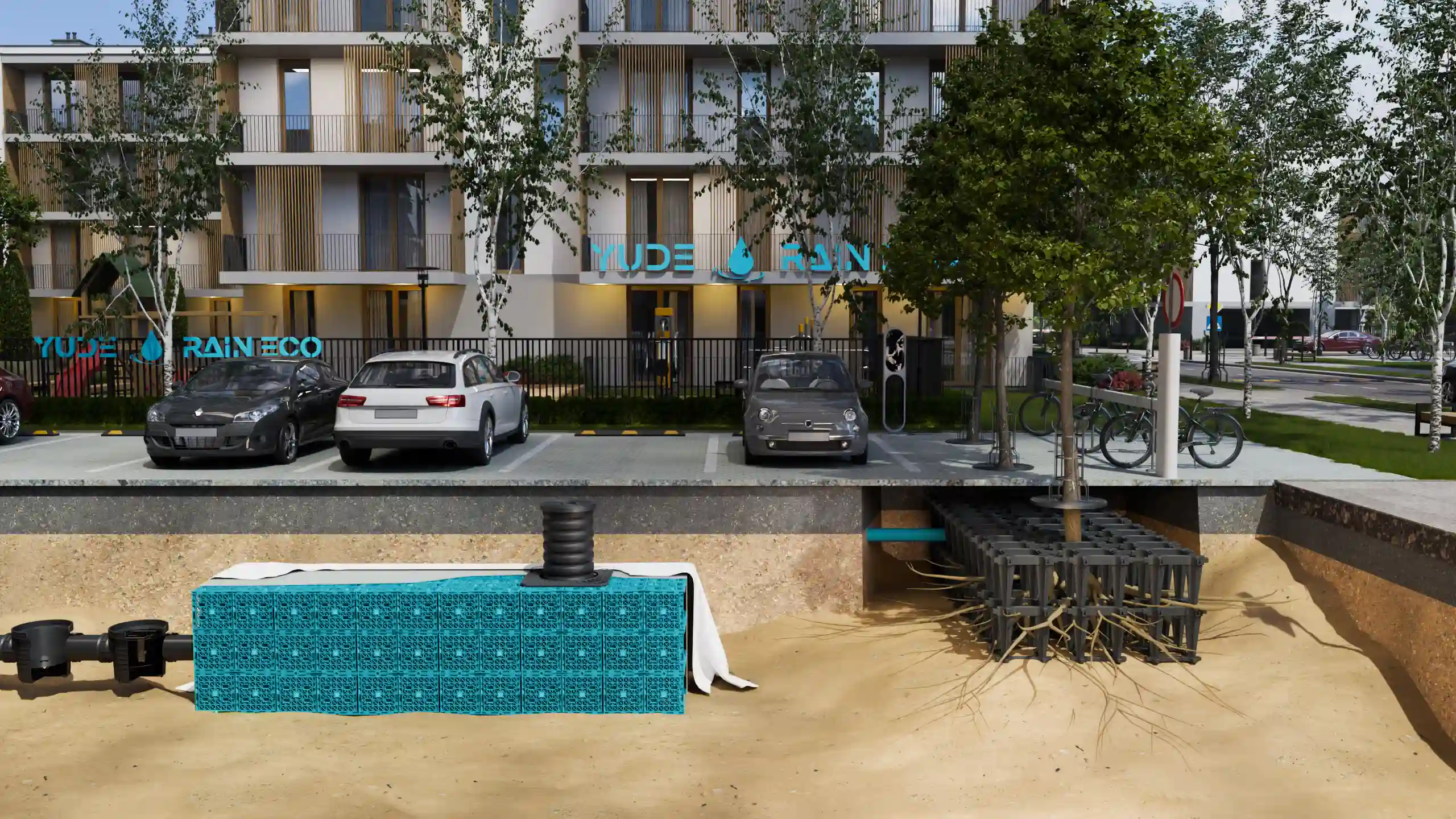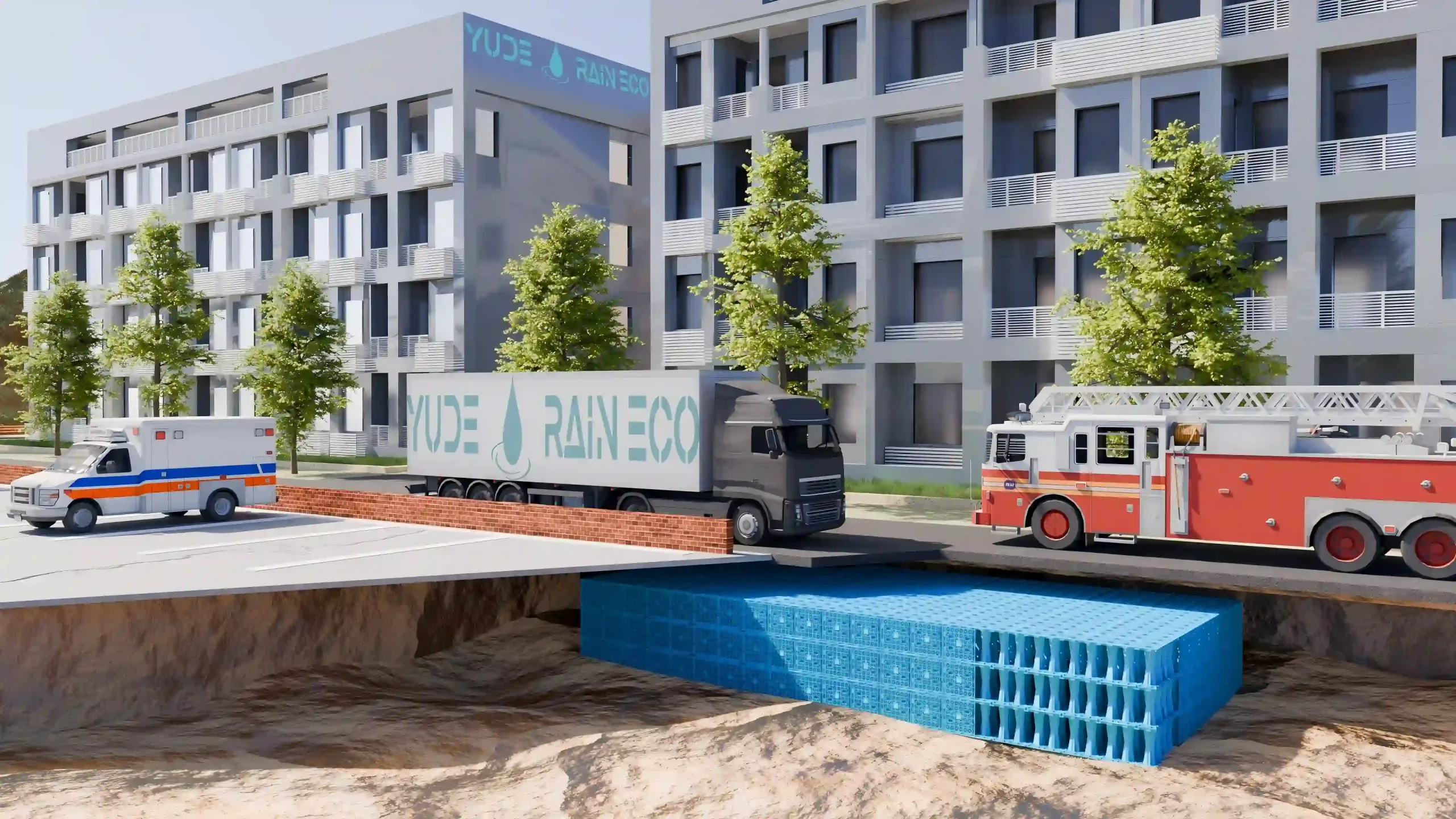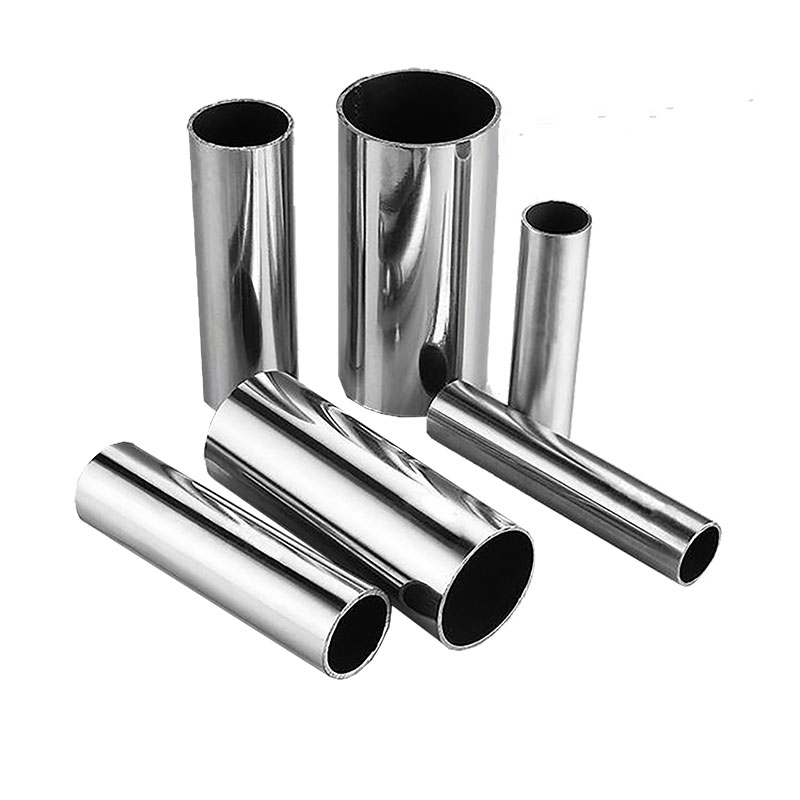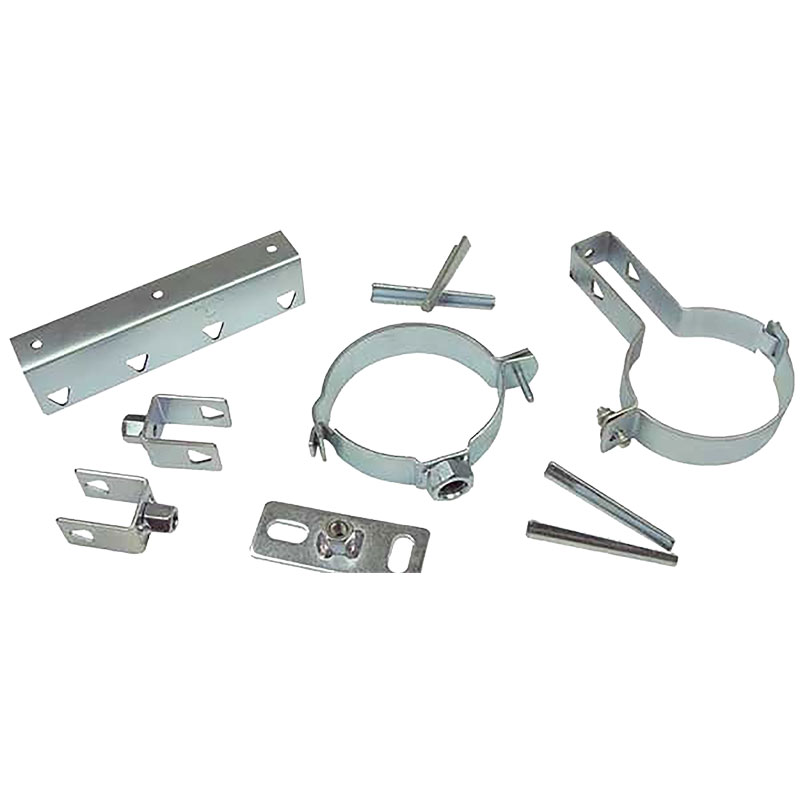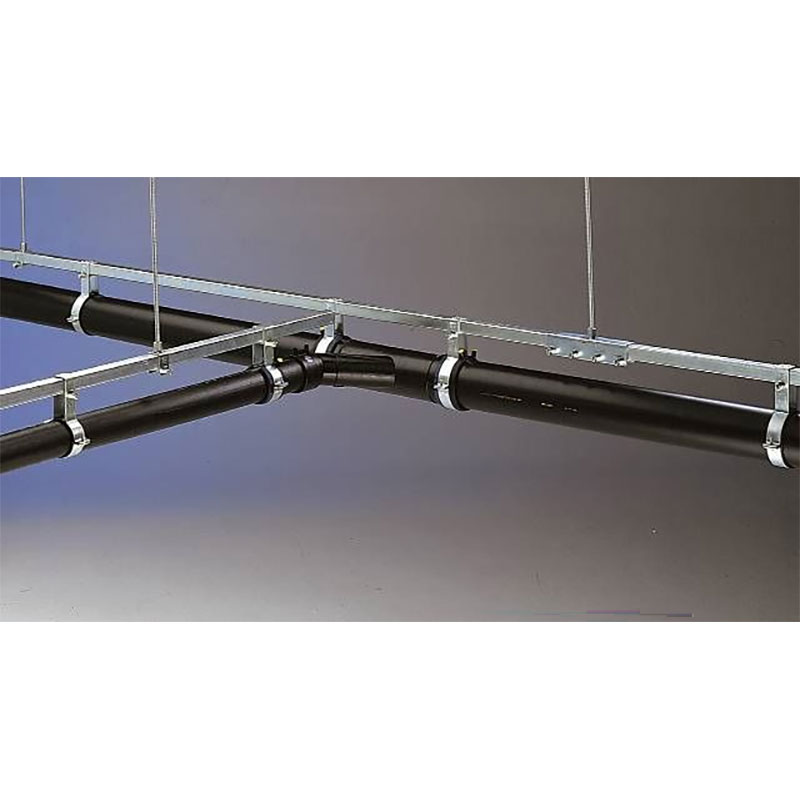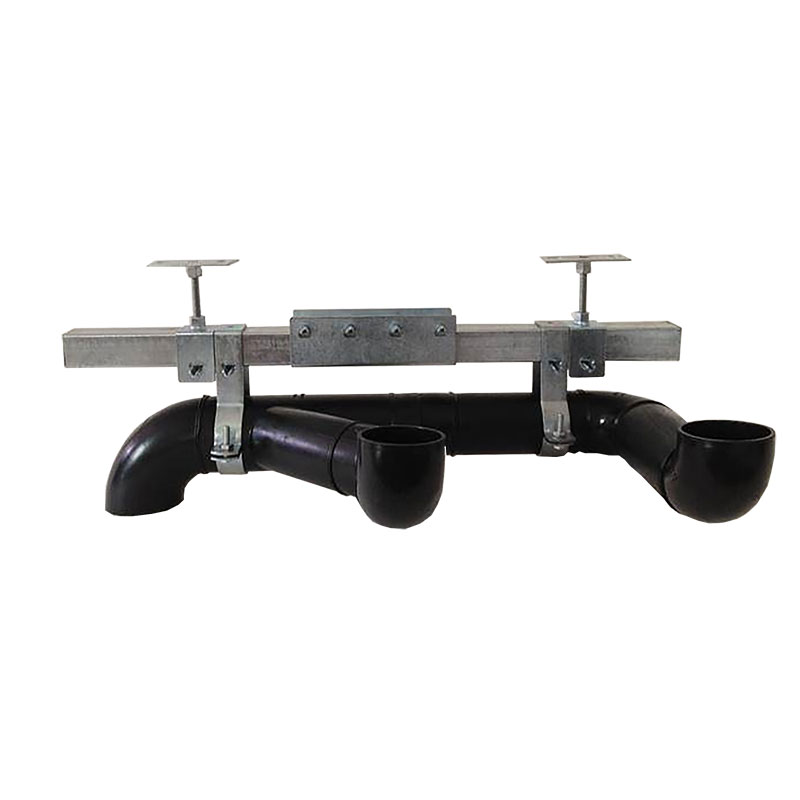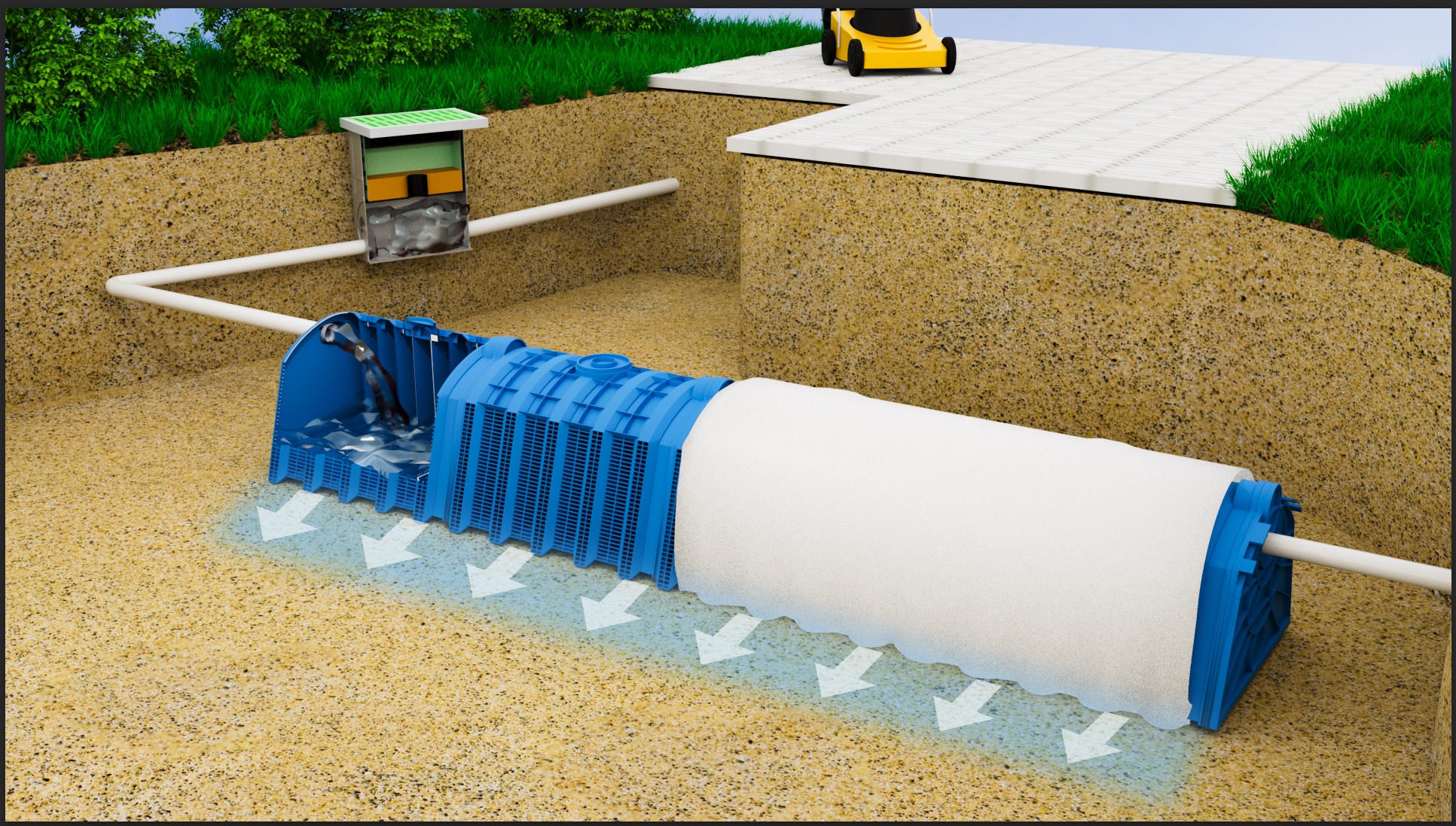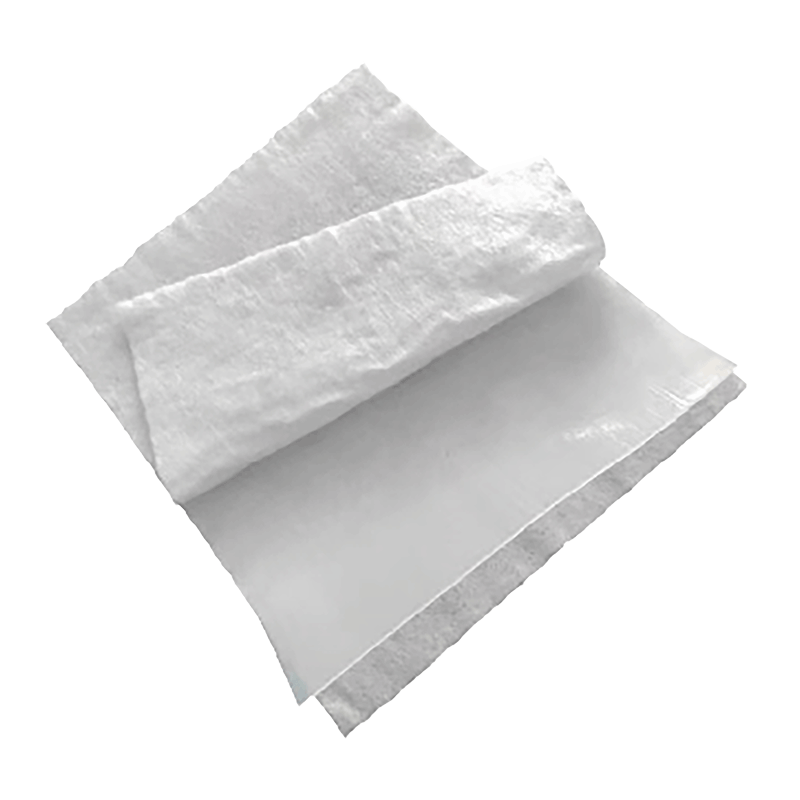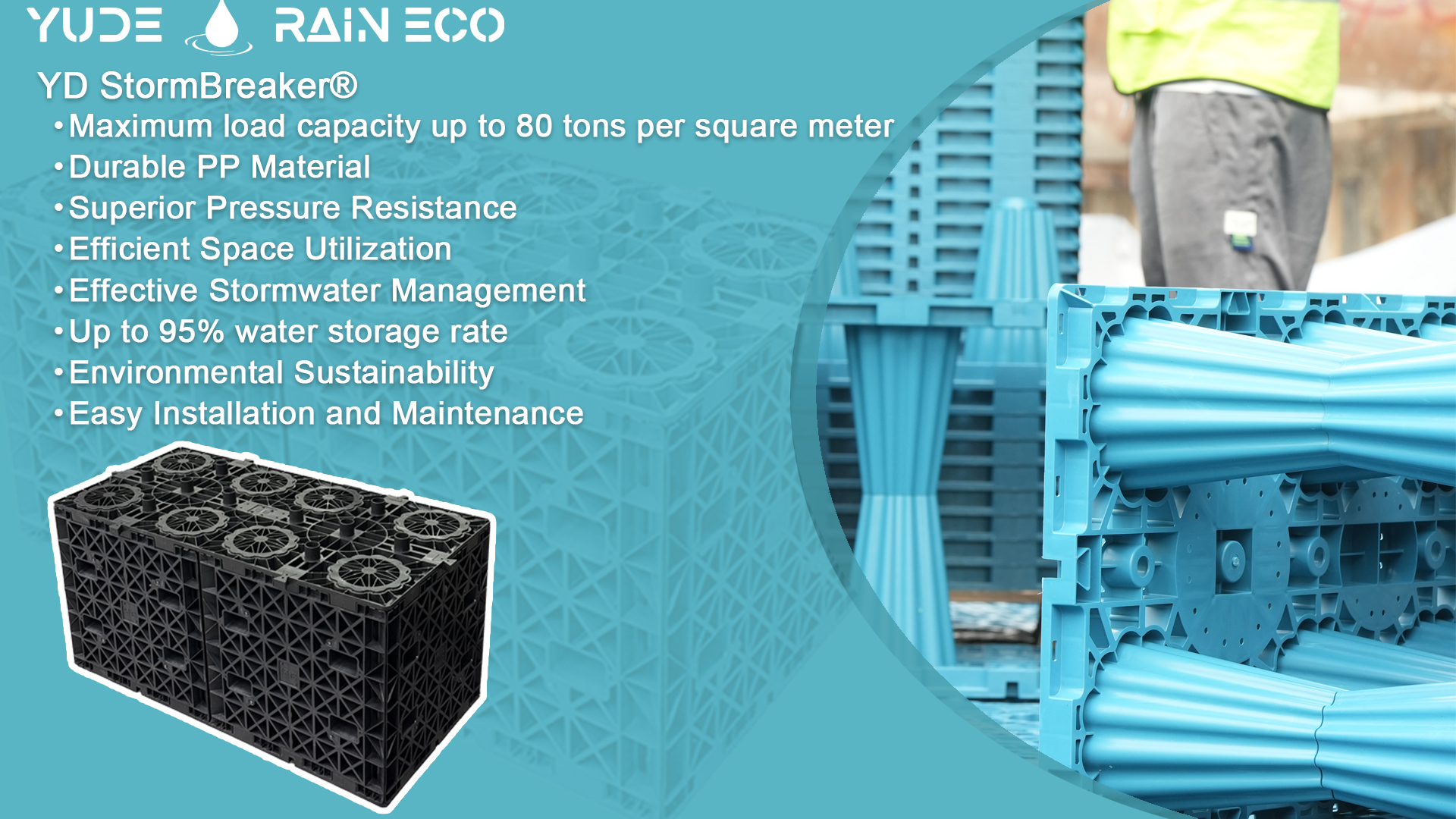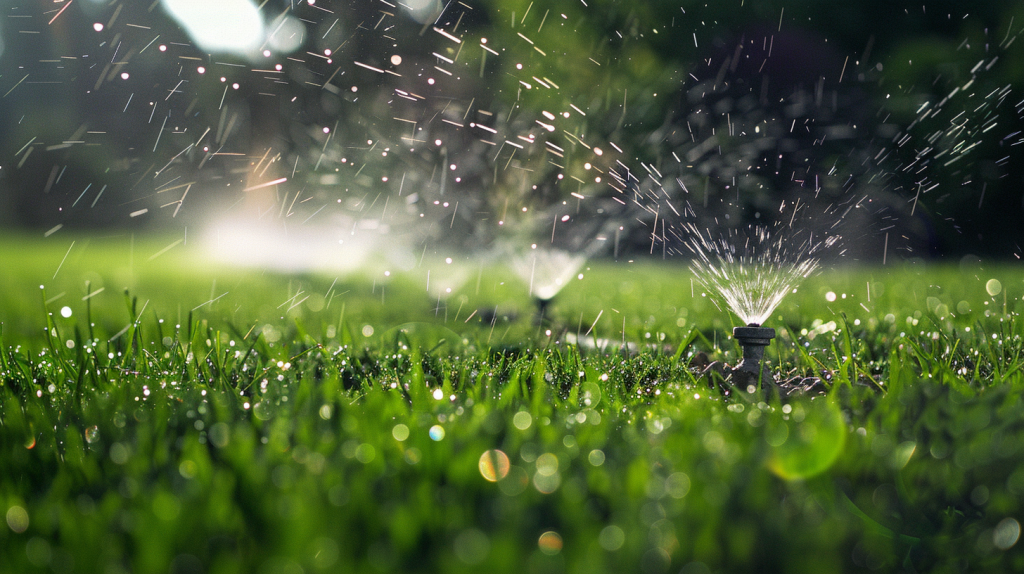Introduction
Water is the lifeblood of our planet, yet it is becoming increasingly scarce. Over 2 billion people live in water-stressed regions, and climate change is intensifying this crisis with unpredictable rainfall and rising temperatures. As urban areas expand and industrial demands grow, innovative water management solutions are essential to ensure a sustainable future. Combining rainwater harvesting with wastewater recycling offers a powerful strategy to maximize water utilization, reduce reliance on freshwater sources, and enhance environmental sustainability.
Rainwater harvesting captures and stores rainwater for non-potable uses like irrigation, toilet flushing, and industrial processes. Wastewater recycling treats greywater (from sinks, showers, and washing machines) and blackwater (from toilets) for reuse, minimizing waste. When integrated, these systems create a closed-loop approach that optimizes every drop of water, making them ideal for urban planners, municipal authorities, industrial facilities, real estate developers, and green city developers.
Yude Rain Eco specializes in advanced rainwater harvesting and stormwater management solutions, offering products like the YD StormBreaker60® attenuation tanks that can be seamlessly integrated into combined water management systems. This blog explores the benefits, technical aspects, and real-world applications of combining these systems, demonstrating how Yude Rain Eco can help you achieve water independence and sustainability goals.
Ⅰ. Understanding Wastewater and Rainwater: A Crucial Distinction
To effectively harness water reuse, it’s essential to differentiate clearly between rainwater, wastewater, and greywater:
- Rainwater: Collected precipitation from rooftops, roads, and surfaces, generally clean but requiring filtration and treatment for specific uses.
- Wastewater: Water contaminated through household, commercial, industrial, or agricultural processes, necessitating extensive treatment before reuse.
- Greywater: A subset of wastewater from showers, sinks, and laundry, usually simpler to treat and widely used for irrigation and flushing toilets.
Ⅱ. Why Integrate Rainwater Harvesting with Wastewater Recycling?
The integration of rainwater harvesting and wastewater recycling addresses multiple challenges in water management, offering benefits that surpass those of standalone systems. Research suggests that combined systems can achieve significant water savings, cost reductions, and environmental improvements, making them a compelling choice for diverse applications.
Water Conservation
Rainwater harvesting provides a free, renewable water source, reducing the demand on municipal supplies. For example, studies indicate that rainwater harvesting can save up to 20-65% of potable water in buildings, depending on the application. Wastewater recycling further enhances this by treating used water for reuse, with greywater systems alone saving up to 30% of indoor water use. When combined, these systems can achieve potable water savings of up to 42.5%, as demonstrated in a case study at the Tecnológico de Monterrey, Monterrey Campus.
Cost Savings
By reducing reliance on municipal water, combined systems lower water bills significantly. For instance, a household in Bengaluru, India, reported meeting 80-90% of its non-potable water needs through rainwater harvesting and greywater recycling, drastically cutting costs. Additionally, many governments offer incentives, such as tax rebates in India or subsidies in North America, which can offset initial installation costs. While the upfront investment may be higher, the payback period for combined systems is often shorter than for standalone systems, especially in regions with high water rates.
Environmental Benefits
These systems reduce stormwater runoff, which can cause soil erosion and pollute waterways with contaminants like fertilizers and sediments. By capturing rainwater, they decrease the volume of runoff, while wastewater recycling reduces the load on sewage treatment plants. A study in Colombia found that a hybrid system reduced wastewater flows by 20%, lowering the environmental impact of treatment processes. Additionally, both systems reduce the energy required for water treatment and distribution, contributing to lower carbon emissions.
Resilience and Reliability
Combined systems enhance water security by providing alternative sources during droughts or water restrictions. This is particularly valuable in urban areas where infrastructure is often strained. By diversifying water sources, these systems ensure a reliable supply for non-potable uses, making them ideal for industrial facilities and municipalities facing water scarcity.
Rainwater Reuse Applications
Rainwater, when properly collected and filtered, is relatively clean and highly versatile. It can be reused in a variety of non-potable applications across residential, commercial, and industrial settings, including:
-
Landscape irrigation (gardens, parks, green roofs)
-
Toilet flushing in homes, offices, and public facilities
-
Cooling tower make-up water in industrial plants and data centers
-
Washing and cleaning (vehicles, sidewalks, outdoor equipment)
-
Fire suppression reserves
-
Agricultural irrigation for crops, orchards, and nurseries
-
Dust suppression on construction and mining sites
-
Car washing facilities
-
Groundwater recharge, especially in areas facing aquifer depletion or saline intrusion
Additionally, with appropriate treatment technologies such as UV disinfection and reverse osmosis, rainwater can also be used for potable purposes in decentralized or off-grid systems.
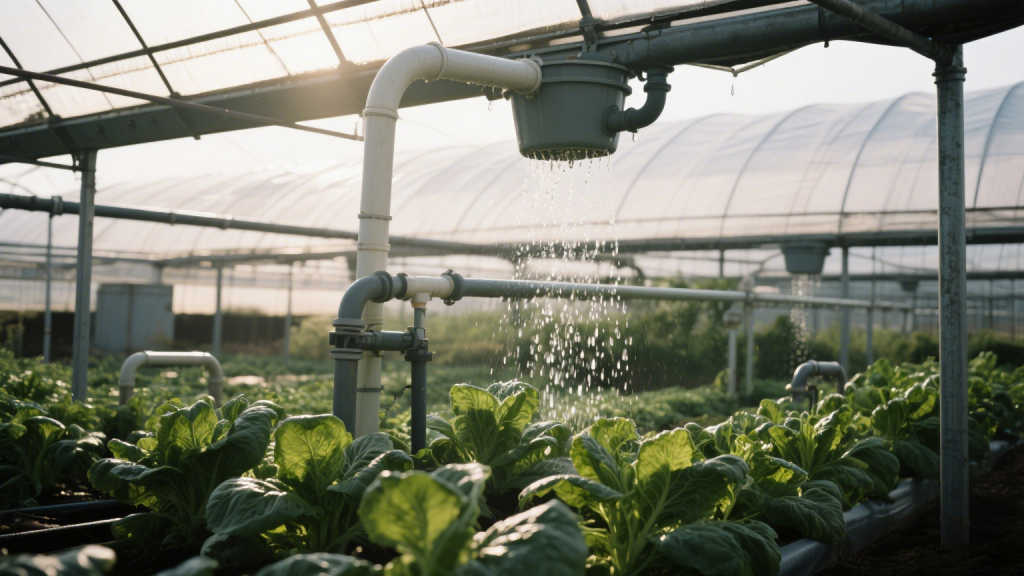
Wastewater Reuse Applications
Treated wastewater is often categorized by source and treatment level. It can be greywater (lightly contaminated) or fully treated effluent from centralized/decentralized systems. Its reuse depends on regulatory approval and water quality standards.
Treated Greywater Reuse:
-
Subsurface landscape irrigation
-
Toilet and urinal flushing
-
Laundry (in some cases)
-
Cooling towers
-
Vehicle or pavement washing
Treated Blackwater / Full Wastewater Reuse:
Requires tertiary treatment (e.g., MBR, RO, disinfection), suitable for:
-
Agricultural irrigation (non-food crops or high-level treated for food crops)
-
Industrial process water
-
Construction use (e.g., concrete mixing, dust suppression)
-
Groundwater recharge (indirect potable reuse)
-
Surface water replenishment (lakes, ponds)
-
Fire protection reservoirs
In some advanced regions (e.g., Singapore, California), ultra-treated wastewater (NEWater or advanced purified water) is used for potable reuse through indirect/direct injection into the water supply.
Ⅲ.How Combined Systems Work?
Understanding the mechanics of rainwater harvesting and wastewater recycling is key to appreciating their synergy.
Rainwater Harvesting
Rainwater harvesting involves collecting rainwater from impermeable surfaces, typically rooftops, and storing it for later use. The main components include:
- Catchment Area: The roof or surface where rainwater is collected.
- Gutters and Downspouts: Channels that direct rainwater to storage.
- Filters: Devices that remove debris and contaminants to ensure water quality.
- Storage Tanks: Containers, such as Yude Rain Eco’s YD StormBreaker60® tanks, that hold rainwater for use.
- Pumps and Distribution: Systems to deliver water to end-use points like irrigation systems or toilets.
Rainwater is typically used for non-potable purposes but can be treated for potable use with advanced filtration and disinfection.
Wastewater Recycling
Wastewater recycling treats greywater and blackwater for reuse. Greywater, from sources like sinks and showers, contains fewer contaminants and is easier to treat, while blackwater requires more intensive treatment due to pathogens. The process includes:
- Collection: Separating greywater and blackwater at the source to streamline treatment.
- Treatment: Using physical (filtration), chemical (disinfection), or biological (constructed wetlands) methods to make water safe for reuse.
- Storage: Holding treated water in tanks until needed.
- Distribution: Delivering treated water for non-potable uses like irrigation or toilet flushing.
Combining these systems creates a cascade effect that maximizes water efficiency:
- Sequential Use: Rainwater is used for initial non-potable purposes (e.g., toilet flushing), and the resulting greywater is treated and reused for irrigation or other uses. This approach ensures water is used multiple times before discharge.
- Parallel Use: Rainwater and treated greywater are used for different purposes simultaneously, such as rainwater for irrigation and greywater for toilet flushing, optimizing resource allocation.
- Groundwater Recharge: Excess rainwater or treated greywater can be directed to recharge aquifers, supporting long-term water sustainability.
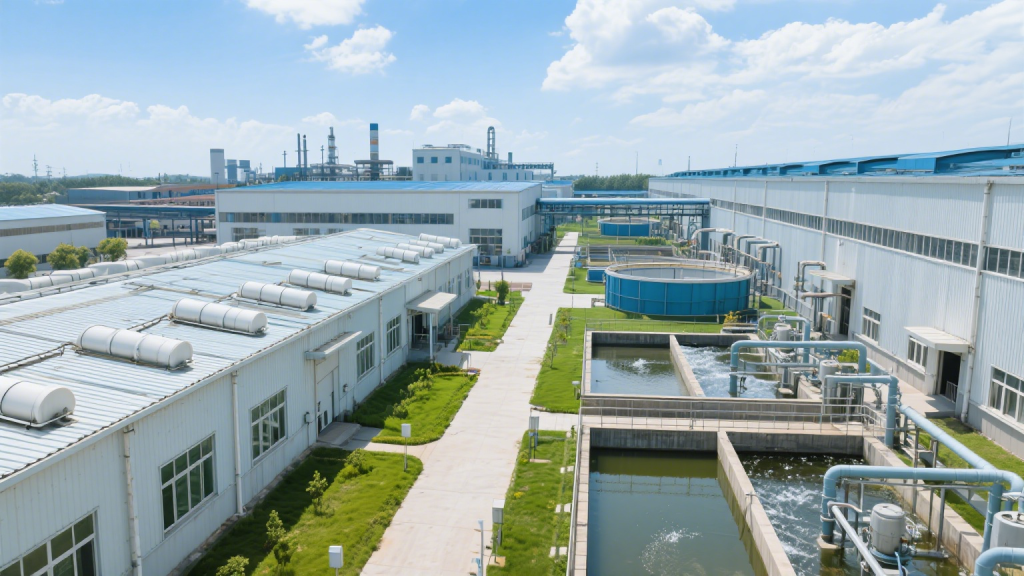
Ⅳ. Key Components of an Integrated System
1. Rainwater Collection and Initial Filtration
Rainwater harvesting involves capturing precipitation through roofs, gutters, or paved areas. Initial filtration removes debris, leaves, and sediments, preparing rainwater for further purification or direct use in non-potable applications.
2. Advanced Wastewater Treatment Processes
Wastewater recycling involves multiple treatment stages, including:
- Primary Treatment: Removal of large solids and sediments.
- Secondary Treatment: Biological processes that degrade organic matter and nutrients.
- Tertiary Treatment: Advanced purification techniques such as microfiltration, ultrafiltration, UV sterilization, and reverse osmosis to produce high-quality recycled water suitable for various reuse applications.
3. Storage and Distribution
Integrated systems require robust, safe, and durable storage solutions, often underground tanks or cisterns, ensuring the treated water’s availability for various needs like irrigation, industrial processes, or indoor non-potable usage.
Ⅴ. Strategic Integration of Rainwater and Wastewater Reuse: From Source to System Optimization
Differentiated Reuse Strategies: Tailoring Rainwater and Wastewater Reuse to Source and Application
Maximizing water reuse starts with understanding the qualitative differences between rainwater and wastewater.
-
Rainwater is generally free of chemical or biological contamination if collected from clean surfaces. It can be used with minimal filtration for applications like landscape irrigation, cooling systems, or non-potable domestic uses such as flushing.
-
Wastewater, on the other hand, requires multi-stage treatment due to the presence of organic matter, detergents, oils, and pathogens. Its reuse demands advanced treatment technologies for safe reintegration into industrial or even potable systems.
A tiered reuse model should be implemented, allocating the cleanest water to the most sensitive uses and progressively reusing treated wastewater where lower purity is acceptable.
Smart System Integration: Linking Rainwater Harvesting with Onsite Wastewater Reuse
High-performance water reuse relies on integrated systems that dynamically manage multiple water sources based on real-time demand and quality.
-
Smart controllers can route water from rainwater storage tanks for irrigation when rainfall is abundant, and switch to recycled wastewater for toilet flushing during dry periods.
-
Onsite treatment units such as MBRs or SBRs (Sequencing Batch Reactors) for wastewater allow decentralized reuse without depending on municipal networks.
-
IoT-based monitoring platforms help track water levels, flow rates, contamination risks, and filter performance, enabling predictive maintenance and efficiency optimization.
These technologies maximize system uptime and reduce environmental impact by ensuring no usable water is discharged as waste.
Building-Level Optimization: Maximize Reuse in Commercial and Industrial Facilities
Large buildings and campuses present the highest opportunity for maximizing reuse due to:
-
Large roof areas for rainwater harvesting
-
Consistent greywater and wastewater generation
-
High non-potable demand (cooling towers, toilet flushing, irrigation)
A closed-loop water reuse design can meet 60–90% of non-potable water needs when planned from the design phase. Additionally, combining stormwater detention and greywater treatment on-site creates resilient systems that mitigate flood risk while reducing municipal water dependency.
Regulatory Frameworks and Quality Standards: The Key to Safe and Scalable Reuse
Maximizing wastewater and rainwater reuse hinges on regulatory clarity and compliance. Key considerations include:
-
Water quality standards: Ensure treated effluents meet local or international standards (e.g., WHO, EPA Title 22, EU Urban Wastewater Directive).
-
Cross-connection prevention: Separate pipelines for reclaimed water and potable water are a legal requirement in most jurisdictions.
-
Permitting and inspections: Regular third-party inspections, monitoring protocols, and documentation are necessary for health and liability assurance.
Lack of clear regulations can hinder adoption, especially in regions without defined categories for greywater reuse. Advocating for supportive policy is part of a long-term reuse strategy.
Lifecycle ROI and Business Value of Water Reuse Integration
Beyond environmental benefits, water reuse offers substantial economic value:
-
Lower water bills and reduced sewage discharge fees
-
Independence from municipal water restrictions during droughts
-
Green building certifications (LEED, BREEAM) that enhance asset value
-
Improved ESG scores for corporate sustainability reporting
A comprehensive cost-benefit analysis should account for capital expenditure, operational costs, savings from reduced consumption, and increased resilience to climate-related risks. For industrial users, the payback period often falls within 2–5 years, depending on scale and water pricing.
Trends in Decentralized and Hybrid Water Reuse Systems
Emerging trends supporting maximal reuse include:
-
Modular systems: Scalable plug-and-play reuse units that can be deployed in rural areas, new developments, or temporary structures
-
Hybrid networks: Integration of decentralized treatment with centralized infrastructure to offer redundancy and adaptive capacity
-
Green infrastructure fusion: Combining water reuse with green roofs, bioretention basins, and urban tree pits to create multifunctional stormwater landscapes
These trends reflect a shift from single-function to multi-benefit water systems tailored to local needs and climate conditions.
Ⅵ. Applications of Integrated Rainwater and Wastewater Systems
Urban and Residential Areas
Urban communities and residential complexes can significantly benefit by employing integrated systems to meet landscaping, irrigation, toilet flushing, and even cooling tower water demands.
Commercial and Industrial Facilities
Businesses and industrial plants can dramatically reduce operational costs by recycling wastewater for cooling, manufacturing processes, cleaning operations, and irrigation of green spaces.
Agricultural Utilization
Agricultural sectors can reuse treated wastewater and harvested rainwater for crop irrigation, significantly lowering freshwater consumption and alleviating drought impacts.
Ⅶ. Real-World Case Studies
Real-world examples illustrate the effectiveness of combined systems in diverse settings.
Case Study 1: Household in Bengaluru, India
- Context: A household in Bengaluru, designed by architect Mahalakshmi Jayaram, achieved near-water independence by integrating rainwater harvesting with greywater treatment.
- System Design:
- Rainwater is collected from the roof and stored in underground tanks with a capacity of 10,000 liters.
- Greywater from sinks, showers, and washing machines is treated using a simple filtration system and stored separately.
- Treated greywater is used for gardening and car washing, while rainwater meets most non-potable needs.
- Results:
- Rainwater supplies 80-90% of the household’s non-potable water needs for 10 months annually.
- The system reduces municipal water dependence and contributes to groundwater recharge through excess water infiltration.
- Annual water bill savings are estimated at 60-70%, with additional environmental benefits from reduced runoff.
- Source: Urban Waters, Bengaluru
- Key Takeaway: Small-scale combined systems are feasible in urban settings, offering significant savings and environmental benefits even with limited space.
Case Study 2: Tecnológico de Monterrey, Monterrey Campus, Mexico
- Context: A study assessed the feasibility of integrating rainwater harvesting with greywater reuse at a university campus in a semi-arid region.
- System Design:
- Rainwater is harvested from roofs and parking areas, stored in high-capacity tanks.
- Greywater from campus facilities (showers, sinks, laundry) is collected and treated using filtration and disinfection.
- Both systems supply non-potable water for irrigation, toilet flushing, and cooling systems.
- Results:
- The hybrid system saves 131 m³/year of potable water, equivalent to 42.5% of total potable water consumption.
- Wastewater flows to treatment plants are reduced by 20%, easing infrastructure strain.
- The system is cost-effective, with a payback period of less than eight years for large-scale applications.
- Source: MDPI, 2016
- Key Takeaway: Large institutional settings can achieve substantial water savings and environmental benefits through integrated systems, making them ideal for campuses and industrial facilities.
Case Study 3: High Water Consumption Household in Colombia
- Context: A study evaluated the environmental performance of a hybrid rainwater harvesting and greywater reuse system in a high water consumption household in Bucaramanga, Colombia.
- System Design:
- Rainwater is collected from a large roof area and stored in modular tanks.
- Greywater is treated using a combination of filtration and biological treatment.
- The system supplies water for irrigation, toilet flushing, and laundry.
- Results:
- Potable water savings of 42.5% were achieved, with a 20% reduction in wastewater flows.
- The hybrid system outperformed centralized water systems in 12 out of 13 environmental impact categories, including lower carbon emissions and reduced eutrophication.
- Source: ScienceDirect, 2022
- Key Takeaway: Hybrid systems offer superior environmental performance, making them a sustainable choice for high water users.
Ⅷ. Designing and Implementing Your Integrated System
Step 1: Comprehensive Needs Assessment
Analyze your water demand, existing wastewater output, rainfall patterns, and available catchment areas to optimize system design effectively.
Step 2: Choosing the Appropriate Treatment Technologies
Select technologies based on targeted water quality standards, budget, and specific reuse applications, ensuring reliability and compliance with local regulations.
Step 3: Ensuring Regulatory Compliance and Sustainability
Compliance with local regulatory frameworks for wastewater recycling and rainwater use is crucial. Engage qualified experts, like YudeRainEco, to navigate these regulations and implement sustainable, compliant systems.
Step 4: Professional Installation and Regular Maintenance
Proper installation and ongoing maintenance are critical for optimal system performance, safety, and longevity. Regular checks and servicing help prevent operational disruptions and ensure consistent water quality.
Ⅸ. Challenges and Solutions
Challenge: High Initial Investment Costs
While initial costs can be significant, long-term savings through reduced municipal water fees, lower wastewater discharge charges, and environmental benefits far outweigh the upfront investment.
Challenge: Ensuring Water Quality
Implementing comprehensive monitoring and advanced treatment technologies effectively addresses concerns about water quality and public health.
- Water Quality Management: Rainwater may contain atmospheric or surface contaminants, requiring filtration. Greywater needs treatment to remove organic matter and pathogens. Advanced systems may use membrane filtration or UV disinfection for higher-quality reuse.
- Storage Capacity: Tanks must be sized to balance demand and supply, considering local rainfall patterns and water usage.
- System Integration: Ensuring seamless operation between rainwater and wastewater systems, with minimal overlap or conflict.
- Maintenance: Regular cleaning of filters, tanks, and treatment systems to maintain water quality and system efficiency.
Yude Rain Eco’s products, such as high-capacity storage tanks and advanced filtration systems, are designed to meet these requirements, providing reliable and efficient solutions for integrated water management.
Challenge: Regulatory Compliance Complexity
Partnering with experienced companies like YudeRainEco can simplify regulatory compliance processes, providing technical expertise and system design guidance tailored to local requirements.
| Challenge | Solution |
|---|---|
| High upfront cost | Offset with ROI in 3–7 years and water bill savings |
| Quality assurance | Achieved via advanced filtration and monitoring |
| Regulatory complexity | Navigated with expert consultants like YudeRainEco |
Ⅹ. Future Trends: Smart Integration and IoT Technologies
The future of integrated water management involves smart technologies and IoT (Internet of Things) devices for real-time monitoring, predictive maintenance, and enhanced operational efficiency. These advancements promise even greater sustainability and cost savings for users.
XI. Why Choose YudeRainEco’s Rainwater Harvesting System to Integrate with Your Wastewater System?
Yude Rain Eco’s Solutions for Integrated Water Management
Yude Rain Eco is at the forefront of sustainable water management, offering products that seamlessly integrate into combined rainwater harvesting and wastewater recycling systems. Our solutions include:
- YD StormBreaker60® Attenuation Tanks: These high-capacity tanks, made from durable high-density polypropylene(PP), can store large volumes of rainwater with a 95% storage efficiency. With a load-bearing capacity of 60 tons per square meter, they are ideal for urban and industrial applications where space is limited.
- Advanced Filtration Systems: Our filtration technologies ensure that harvested rainwater is free of debris and contaminants, making it suitable for integration with greywater systems.
- Stormwater Management Solutions: Our systems control runoff, preventing flooding and ensuring that harvested rainwater remains clean for reuse.
- Custom Design Services: Our team collaborates with clients to design tailored solutions, from small residential systems to large-scale municipal projects, ensuring seamless integration with wastewater recycling systems.
-
Expertise in Rainwater Engineering
YudeRainEco focuses exclusively on rainwater harvesting systems, offering proven technical solutions tailored for integration with broader water reuse strategies. -
Modular and Scalable Design
Our systems and product YD StormBreaker60® are designed to be easily combined with existing or planned wastewater recycling infrastructure, allowing phased or large-scale deployment. -
Optimized System Efficiency
By capturing and reusing clean rooftop rainwater, you reduce the load on wastewater treatment, extend system life, and achieve better water quality tiering. -
Seamless Integration with Non-Potable Loops
Yude’s systems are ideal for joint use in irrigation, toilet flushing, cooling towers, and fire suppression—reducing reliance on potable supply. -
Low Maintenance, High Performance
Built for durability, easy inspection, and low operating cost, our systems ensure long-term reliability in integrated environments. -
Compliance-Ready for Global Markets
Our rainwater systems are engineered to support water reuse standards and regulations in Asia, the Middle East, Europe, and beyond. -
Trusted by Engineers and Contractors Worldwide
With international project experience and a strong track record in rainwater management, YudeRainEco is the preferred rainwater partner in integrated reuse systems.
By combining our rainwater harvesting expertise with wastewater recycling technologies, we help clients achieve maximum water efficiency, reduce costs, and meet sustainability goals. Our products are designed to comply with international standards, ensuring reliability and performance.
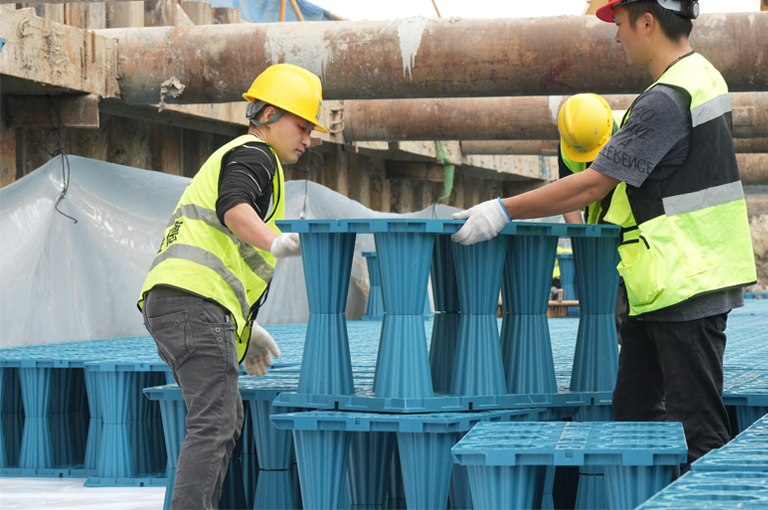
Want to Cut Over 90% of Your Water Costs?
Start with the smartest water you can harvest—rainwater.
YudeRainEco design and supply advanced rainwater harvesting systems that seamlessly integrate with your building’s water reuse strategy, including:
-
Landscape and green roof irrigation
-
Toilet flushing and cooling systems
-
Stormwater attenuation and infiltration
-
Complementary use with existing greywater or wastewater systems
From design consultation to modular system supply and international project support, we help you:
-
Capture and store rainwater efficiently
-
Reduce surface runoff and prevent flooding
-
Reuse rainwater for non-potable applications such as irrigation, flushing, and landscaping
-
Meet green building standards and sustainability goals
Get your custom rainwater harvesting system design today—engineered for maximum savings, sustainability, and long-term performance.
Conclusion
Combining rainwater harvesting with wastewater recycling is a transformative approach to water management, offering significant water savings, cost reductions, and environmental benefits. By leveraging the synergy of these systems, urban planners, municipalities, industrial facilities, and developers can achieve water independence, reduce infrastructure strain, and contribute to a sustainable future.
Yude Rain Eco is committed to helping clients maximize their water resources with innovative rainwater harvesting solutions that integrate seamlessly with wastewater recycling systems. Our products, backed by expert design and support, are tailored to meet the needs of diverse applications, from small households to large-scale urban projects.
Take the first step toward a water-secure future. Contact Yude Rain Eco today to explore how our solutions can help you achieve your sustainability goals and optimize water utilization.
FAQ
1. What is the difference between greywater and blackwater?
Greywater refers to gently used water from showers, sinks, and laundry that can be treated and reused. Blackwater includes water from toilets and kitchens, containing organic waste and requiring more intensive treatment.
2. Can rainwater and greywater be stored together?
Generally no. Rainwater is cleaner and typically stored separately to prevent contamination. Each source should be treated and stored according to its intended reuse application.
3. Is treated wastewater safe for irrigation?
Yes. When properly treated, reclaimed wastewater meets safety standards for agricultural and landscape irrigation, reducing freshwater demand.
4. What are the most cost-effective uses of recycled water?
Irrigation, toilet flushing, industrial cooling, and fire suppression are among the most efficient and cost-saving applications for recycled water.
5. How can an integrated system reduce my water bills?
By reducing reliance on municipal water and minimizing wastewater discharge fees, users can achieve long-term financial savings—often recouping system costs within 3–7 years.
6. Do integrated systems require a lot of maintenance?
Routine maintenance is essential but manageable. Regular inspections, filter replacements, and pump servicing ensure consistent water quality and system longevity.
7. Can these systems be retrofitted into existing buildings?
Yes. With the right design and engineering support, rainwater and wastewater reuse systems can be integrated into both new developments and existing infrastructures.
8. Is rainwater considered part of greywater or wastewater?
No. Rainwater is collected precipitation, typically from rooftops or clean surfaces. It is not classified as greywater or wastewater. Rainwater is usually cleaner and managed separately through rainwater harvesting systems for reuse in non-potable or even potable applications after appropriate treatment.
References
- Potential of Rainwater Harvesting and Greywater Reuse for Water Consumption Reduction and Wastewater Minimization
- Integrated systems for rainwater harvesting and greywater reuse: a systematic review
- A combined wastewater treatment and rainwater harvesting system
- Environmental performance of a hybrid rainwater harvesting and greywater reuse system
- Rainwater Harvesting Market Size
- Wastewater Treatment and Reuse Market

